|

SALMON
FARMING
- Fish tanks off the coast of the Isle of Skye in Scotland.
Fish farming or pisciculture involves raising fish commercially in tanks or enclosures, usually for food. It is the principal form of
aquaculture, while other methods may fall under mariculture. A facility that releases juvenile fish into the wild for recreational fishing or to supplement a species' natural numbers is generally referred to as a fish hatchery. Worldwide, the most important fish species used in fish farming are carp, tilapia, salmon, and catfish.
Demand is increasing for fish and fish protein, which has resulted in widespread overfishing in wild fisheries.
China provides 62% of the world's farmed fish. As of 2016, more than 50% of seafood was produced by aquaculture.
Farming carnivorous fish, such as salmon, does not always reduce pressure on wild fisheries, since carnivorous farmed fish are usually fed fishmeal and fish oil extracted from wild forage fish. The 2008 global returns for fish farming recorded by the FAO totaled 33.8 million tonnes worth about $US 60 billion.
FISH
FARMING ISSUES
The issue of feeds in fish farming has been a controversial one. Many cultured fishes (tilapia, carp, catfish, many others) require no meat or fish products in their diets. Top-level carnivores (most salmon species) depend on fish feed of which a portion is usually derived from wild-caught
fish (anchovies, menhaden, etc.). Vegetable-derived proteins have successfully replaced fish meal in feeds for carnivorous fishes, but vegetable-derived oils have not successfully been incorporated into the diets of carnivores.
Secondly, farmed fish are kept in concentrations never seen in the wild (e.g. 50,000 fish in a 2-acre (8,100 m2) area). However, fish tend also to be animals that aggregate into large
schools at high density. Most successful aquaculture species are schooling species, which do not have social problems at high density. Aquaculturists feel that operating a rearing system above its design capacity or above the social density limit of the fish will result in decreased growth rate and increased food conversion ratio - kg dry feed/kg of fish produced, which results in increased cost and risk of health problems along with a decrease in profits. Stressing the animals is not desirable, but the concept of and measurement of stress must be viewed from the perspective of the animal using the scientific method.
Sea lice, particularly Lepeophtheirus salmonis and various Caligus species, including C. clemensi and C. rogercresseyi, can cause deadly infestations of both farm-grown and wild salmon. Sea lice are ectoparasites which feed on mucus, blood, and skin, and migrate and latch onto the skin of wild salmon during
free-swimming,
planktonic nauplii and copepodid larval stages, which can persist for several days. Large numbers of highly populated, open-net salmon farms can create exceptionally large concentrations of sea lice; when exposed in river estuaries containing large numbers of open-net farms, many young wild salmon are infected, and do not survive as a result. Adult salmon may survive otherwise critical numbers of sea lice, but small, thin-skinned juvenile salmon migrating to sea are highly vulnerable. On the Pacific coast of
Canada, the louse-induced mortality of pink salmon in some regions is commonly over 80%.
A 2008 meta-analysis of available data shows that salmon farming reduces the survival of associated wild salmon populations. This relationship has been shown to hold for Atlantic, steelhead, pink, chum, and coho salmon. The decrease in survival or abundance often exceeds 50%.
Diseases and parasites are the most commonly cited reasons for such decreases. Some species of sea lice have been noted to target farmed coho and
Atlantic salmon. Such parasites have been shown to have an effect on nearby wild fish. One place that has garnered international media attention is British Columbia's Broughton Archipelago. There, juvenile wild salmon must "run a gauntlet" of large fish farms located off-shore near river outlets before making their way to sea. The farms allegedly cause such severe sea lice infestations that one study predicted in 2007 a 99% collapse in the wild salmon population by 2011. This claim, however, has been criticized by numerous scientists who question the correlation between increased fish farming and increases in sea lice infestation among wild salmon.
Because of parasite problems, some aquaculture operators frequently use strong antibiotic drugs to keep the fish alive, but many fish still die prematurely at rates up to 30%. In some cases, these drugs have entered the environment. Additionally, the residual presence of these drugs in human food products has become controversial. Use of antibiotics in food production is thought to increase the prevalence of antibiotic resistance in human diseases. At some facilities, the use of antibiotic drugs in aquaculture has decreased considerably due to vaccinations and other techniques. However, most fish-farming operations still use antibiotics, many of which escape into the surrounding environment.
The lice and pathogen problems of the 1990s facilitated the development of current treatment methods for sea lice and pathogens, which reduced the stress from parasite/pathogen problems. However, being in an ocean environment, the transfer of disease organisms from the wild fish to the aquaculture fish is an ever-present risk.
The large number of fish kept long-term in a single location contributes to habitat destruction of the nearby areas. The high concentrations of fish produce a significant amount of condensed faeces, often contaminated with drugs, which again affects local waterways. However, if the farm is correctly placed in an area with a strong current, the 'pollutants' are flushed out of the area fairly quickly. Not only does this help with the pollution problem, but water with a stronger current also aids in overall fish growth. Concern remains that resultant bacterial growth strips the water of oxygen, reducing or killing off the local marine life. Once an area has been so contaminated, the fish farms are moved to new, uncontaminated areas. This practice has angered nearby fishermen.
Other potential problems faced by aquaculturists are the obtaining of various permits and water-use rights, profitability, concerns about invasive species and genetic engineering depending on what species are involved, and interaction with the United Nations Convention on the Law of the Sea.
In regards to genetically modified, farmed salmon, concern has been raised over their proven reproductive advantage and how it could potentially decimate local fish populations, if released into the wild. Biologist Rick Howard did a controlled laboratory study where wild fish and GMO fish were allowed to breed. The GMO fish crowded out the wild fish in spawning beds, but the offspring were less likely to survive. The colorant used to make pen-raised salmon appear rosy like the wild fish has been linked with retinal problems in
humans.
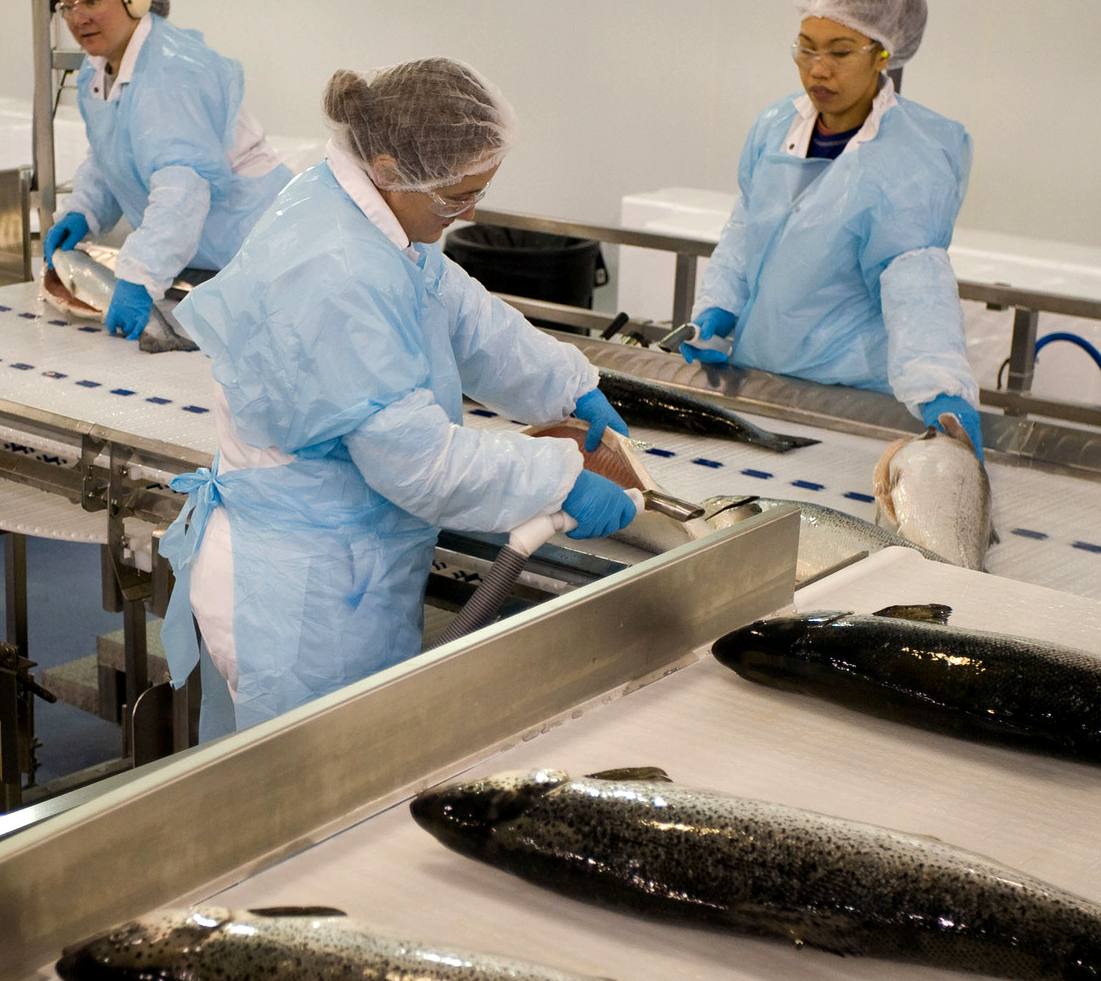

EXTENSIVE AQUACULTURE
Growth is limited by available food, commonly zooplankton feeding on pelagic algae or benthic animals, such as crustaceans and mollusks. Tilapia filter feed directly on phytoplankton, which makes higher production possible. Photosynthetic production can be increased by fertilizing pond water with artificial fertilizer mixtures, such as potash, phosphorus, nitrogen, and microelements.
Another issue is the risk of algal blooms. When temperatures, nutrient supply, and available sunlight are optimal for algal growth, algae multiply at an exponential rate, eventually exhausting nutrients and causing a subsequent die-off. The decaying algal biomass depletes the oxygen in the
pond
water because it blocks out
the sun and pollutes it with organic and inorganic solutes (such as ammonium ions), which can (and frequently do) lead to massive loss of fish.
An alternate option is to use a wetland system such as that of Veta la Palma in
Spain.
To tap all available food sources in the pond, the aquaculturist chooses fish species which occupy different places in the pond ecosystem, e.g., a filter algae feeder such as tilapia, a benthic feeder such as carp or [catfish and a zooplankton feeder (various carps) or submerged weeds feeder such as grass carp.
Despite these limitations, significant fish farming industries use these methods. In the
Czech
Republic, thousands of natural and semi-natural ponds are harvested each year for trout and carp. The large ponds around Trebon built from around 1650 are still in use.
In these kinds of systems fish production per unit of surface can be increased at will, as long as sufficient oxygen, fresh water and food are provided. Because of the requirement of sufficient fresh water, a massive water purification system must be integrated in the fish farm. One way to achieve this is to combine hydroponic horticulture and water treatment, see below. The exception to this rule are cages which are placed in a river or sea, which supplements the fish crop with sufficient
oxygenated water. Some environmentalists object to this practice.
The cost of inputs per unit of fish weight is higher than in extensive farming, especially because of the high cost of fish feed, which must contain a much higher level of protein (up to 60%) than cattle feed and a balanced amino acid composition, as well. However, these higher protein level requirements are a consequence of the higher food conversion efficiency (FCR—kg of feed per kg of animal produced) of aquatic animals. Fish such as salmon have an FCR around 1.1 kg of feed per kg of
salmon whereas chickens are in the 2.5 kg of feed per kg of chicken range. Fish do not use energy to keep warm, eliminating some carbohydrates and fats in the diet, required to provide this energy. This may be offset, though, by the lower land costs and the higher production which can be obtained due to the high level of input control.
Aeration of the water is essential, as fish need a sufficient oxygen level for growth. This is achieved by bubbling, cascade flow, or aqueous oxygen. Clarias spp. can breathe atmospheric air and can tolerate much higher levels of pollutants than trout or salmon, which makes aeration and water purification less necessary and makes Clarias species especially suited for intensive fish production. In some Clarias farms, about 10% of the water volume can consist of fish biomass.
The risk of infections by parasites such as fish lice, fungi (Saprolegnia spp.), intestinal worms (such as nematodes or trematodes), bacteria (e.g., Yersinia spp., Pseudomonas spp.), and protozoa (such as dinoflagellates) is similar to animal husbandry, especially at high population densities. However, animal husbandry is a larger and more technologically mature area of human agriculture and better solutions to pathogen problem exist. Intensive aquaculture does have to provide adequate water quality (oxygen, ammonia, nitrite, etc.) levels to minimize stress, which makes the pathogen problem more difficult. This means intensive aquaculture requires tight monitoring and a high level of expertise of the fish farmer.
Controlling roes manually
Very-high-intensity recycle aquaculture systems (RAS), where all the production parameters are controlled, are being used for high-value species. By recycling it, very little water is used per unit of production. However, the process does have high capital and operating costs. The higher cost structures mean that RAS is only economical for high-value products such as broodstock for egg production, fingerlings for net pen aquaculture operations, sturgeon production, research animals, and some special niche markets like live fish.
Raising ornamental coldwater fish (goldfish or koi), although theoretically much more profitable due to the higher income per weight of fish produced, has never been successfully carried out until recently. The increased incidences of dangerous viral diseases of koi carp, together with the high value of the fish, has led to initiatives in closed-system koi breeding and growing in a number of countries. Today, a few commercially successful intensive koi growing facilities exist in the UK,
Germany, and
Israel.
Some producers have adapted their intensive systems in an effort to provide consumers with fish that do not carry dormant forms of viruses and diseases.
In 2016, juvenile Nile tilapia were given a food containing dried Schizochytrium in place of fish oil. When compared to a control group raised on regular food, they exhibited higher weight gain and better food-to-growth conversion, plus their flesh was higher in healthy omega-3 fatty acids.
THE CAGE SYSTEM
Fish cages are placed in lakes, bayous, ponds, rivers, or oceans to contain and protect fish until they can be harvested. The method is also called "off-shore cultivation" when the cages are placed in the sea. They can be constructed of a wide variety of components. Fish are stocked in cages, artificially fed, and harvested when they reach market size. A few advantages of fish farming with cages are that many types of waters can be used (rivers, lakes, filled quarries, etc.), many types of fish can be raised, and fish farming can co-exist with sport fishing and other water uses.One of the largest problems with freshwater pisciculture is that it can use a million gallons of water per acre (about 1 m³ of water per m²) each year. Extended water purification systems allow for the reuse (recycling) of local water.
The largest-scale pure fish farms use a system derived (admittedly much refined) from the New Alchemy Institute in the 1970s. Basically, large
plastic fish tanks are placed in a greenhouse. A hydroponic bed is placed near, above or between them. When tilapia are raised in the tanks, they are able to eat algae, which naturally grow in the tanks when the tanks are properly fertilized.
The tank water is slowly circulated to the hydroponic beds, where the tilapia waste feeds commercial plant crops. Carefully cultured microorganisms in the hydroponic bed convert ammonia to nitrates, and the plants are fertilized by the nitrates and phosphates. Other wastes are strained out by the hydroponic media, which double as an aerated pebble-bed filter.
This system, properly tuned, produces more edible protein per unit area than any other. A wide variety of plants can grow well in the hydroponic beds. Most growers concentrate on herbs (e.g. parsley and basil), which command premium prices in small quantities all year long. The most common customers are restaurant wholesalers.
Since the system lives in a greenhouse, it adapts to almost all temperate climates, and may also adapt to tropical climates. The main environmental impact is discharge of water that must be salted to maintain the fishes' electrolyte balance. Current growers use a variety of proprietary tricks to keep fish healthy, reducing their expenses for salt and wastewater discharge permits. Some veterinary authorities speculate that ultraviolet ozone disinfectant systems (widely used for ornamental fish) may play a prominent part in keeping the tilapia healthy with recirculated water.
A number of large, well-capitalized ventures in this area have failed. Managing both the biology and markets is complicated. One future development is the combination of integrated recycling systems with urban farming as tried in Sweden by the Greenfish Initiative. Cage farming of fishes in open seas is also gaining popularity. Concerns of disease, poaching, poor water quality, etc., lead some to believe that in general, pond systems are easier to manage and simpler to start. Also, past occurrences of cage-failures leading to escapes, have raised concern regarding the culture of non-native fish species in dam or open-water cages. Though the cage-industry has made numerous technological advances in cage construction in recent years,
storms always make the concern for escapes valid.
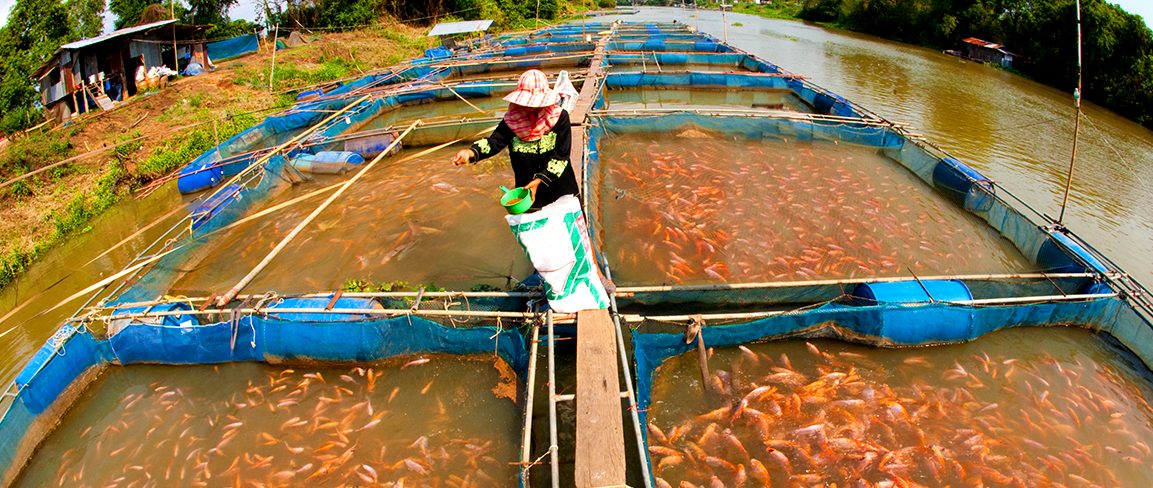
LABELING
FARMED FISH - Shoppers need to know where and how their fish was
farmed in order to decide if it is safe for them to eat. The sustainable fish farming industry is in its infancy, though production has ramped up in recent years. There are now a number of certifying agencies that provide third-party verification for aquaculture producers seeking the sustainable route. Various labels indicating sustainable farmed fish are starting to show up in grocery stores, though it’s much more common to find these products in Europe than in North America. Where they are found, it’s generally with frozen seafood products, not at the fresh fish counter.
EU
AQUACULTURE GUIDELINES
The
European Union established organic aquaculture guidelines in 2009 and
Canada unveiled its national organic certification program for fish in 2012, but the USDA has yet to follow suit. Independent certification groups are filling this niche, however. Most certified producers are overseas, but some of their products can now be found at North American grocery stores. Sustainability standards vary among them, but the following certifying agencies have met the approval of
Sea
Choice, a sustainable seafood organization in Canada endorsed by the scientist-environmentalist
David
Suzuki:
* Aquaculture Stewardship Council
* Naturland
* Food Alliance
* Friends of the Sea
* Global Aquaculture Alliance Best Aquaculture Practices
Environmental groups have criticized the standards of many sustainability certifications for farmed fish as not living up to the promise of organic standards, so it’s worthwhile to look into the specific products and the farming practices used for each. The Monterrey Bay Aquarium provides a nifty online tool for doing so, called
Seafood Watch.
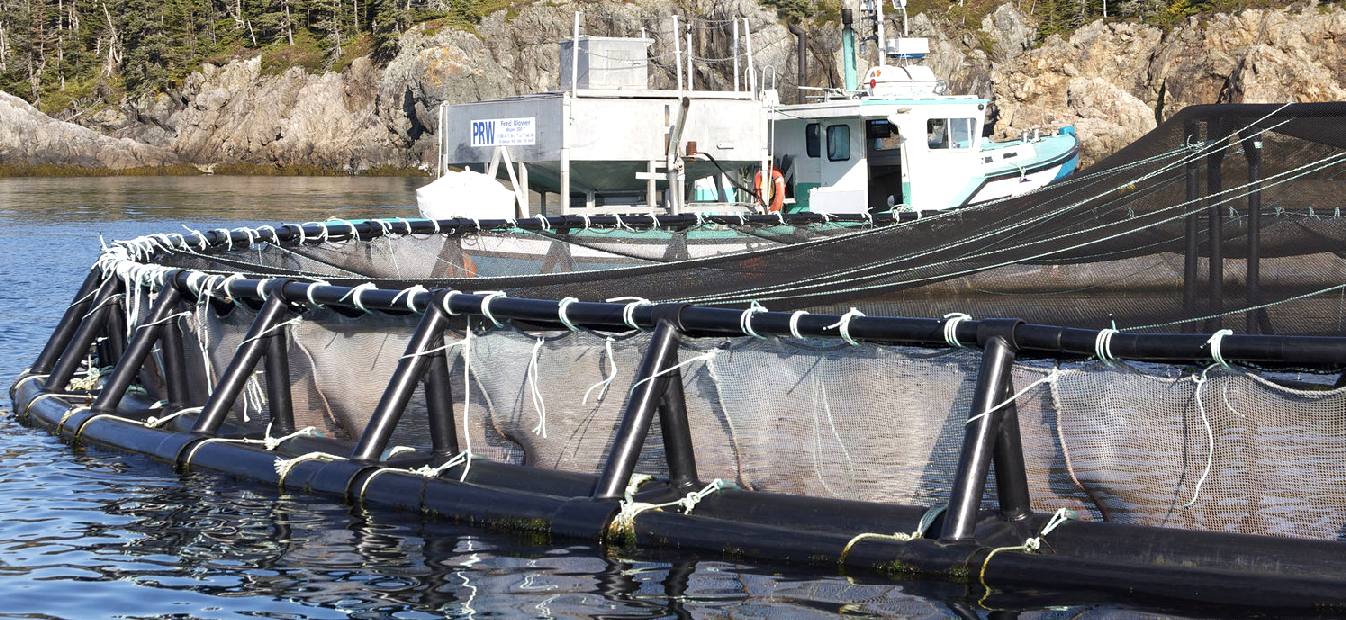
FT
APRIL & IMF SEPT 2016 - Christine Lagarde called on policy makers
to pass a range of economic reforms to avoid the trap of years of
lacklustre growth - a trap which the International Monetary Fund’s
managing director said risked stoking frustrations with the global
economic and political establishment.
In the emerging and developing countries – home to 85 percent of the world’s
population – we have seen more progress for more people than at any
time in history: child mortality is down, life expectancy is up; absolute
poverty has declined, school enrollment is on the rise.
A good deal of this development is due to the success of China, but there
has been a broader trend of economic convergence between the poor and the
rich nations - not as fast as it should be, but a trend nevertheless.
We are also in the middle of a giant move toward the digital age. Six
billion people now have access to a cell phone, and 3½ billion can access
the internet. Innovation is sure to follow.
COMMENT
- What all this means is that there are more well informed mouths to feed,
all wanting quality protein, transport and homes and all of that raises
planet earth's bill in terms of climate
change with less land to produce more food. - and that is why growth
must expand into the blue oceans. The jobs that Ms Lagarde is looking for
are rapidly being filled by robots. Hence, the conventional job market is
shrinking as technology expands to free humans from mundane manual tasks
for more leisure time.
AQUAPONICS
One of the problems with freshwater pisciculture is that it can use a million gallons of water per acre (about 1 m³ of water per m²) each year. Extended water purification systems allow for the reuse (recycling) of local water.
The largest-scale pure fish farms use a system derived (admittedly much refined) from the New Alchemy Institute in the 1970s. Basically, large plastic fish tanks are placed in a greenhouse. A hydroponic bed is placed near, above or between them. When tilapia are raised in the tanks, they are able to eat algae, which naturally grow in the tanks when the tanks are properly fertilized.
The tank water is slowly circulated to the hydroponic beds, where the tilapia waste feeds commercial plant crops. Carefully cultured microorganisms in the hydroponic bed convert ammonia to nitrates, and the plants are fertilized by the nitrates and phosphates. Other wastes are strained out by the hydroponic media, which double as an aerated pebble-bed filter.
This system, properly tuned, produces more edible protein per unit area than any other. A wide variety of plants can grow well in the hydroponic beds. Most growers concentrate on herbs (e.g. parsley and basil), which command premium prices in small quantities all year long. The most common customers are restaurant wholesalers.
Since the system lives in a greenhouse, it adapts to almost all temperate climates, and may also adapt to tropical climates. The main environmental impact is discharge of water that must be salted to maintain the fishes' electrolyte balance. Current growers use a variety of proprietary tricks to keep fish healthy, reducing their expenses for salt and wastewater discharge permits. Some veterinary authorities speculate that ultraviolet ozone disinfectant systems (widely used for ornamental fish) may play a prominent part in keeping the tilapia healthy with recirculated water.
A number of large, well-capitalized ventures in this area have failed. Managing both the biology and markets is complicated. One future development is the combination of integrated recycling systems with urban farming as tried in Sweden by the Greenfish Initiative.
THE
AUSTRALIAN LED BLUE ECONOMY CHALLENGE
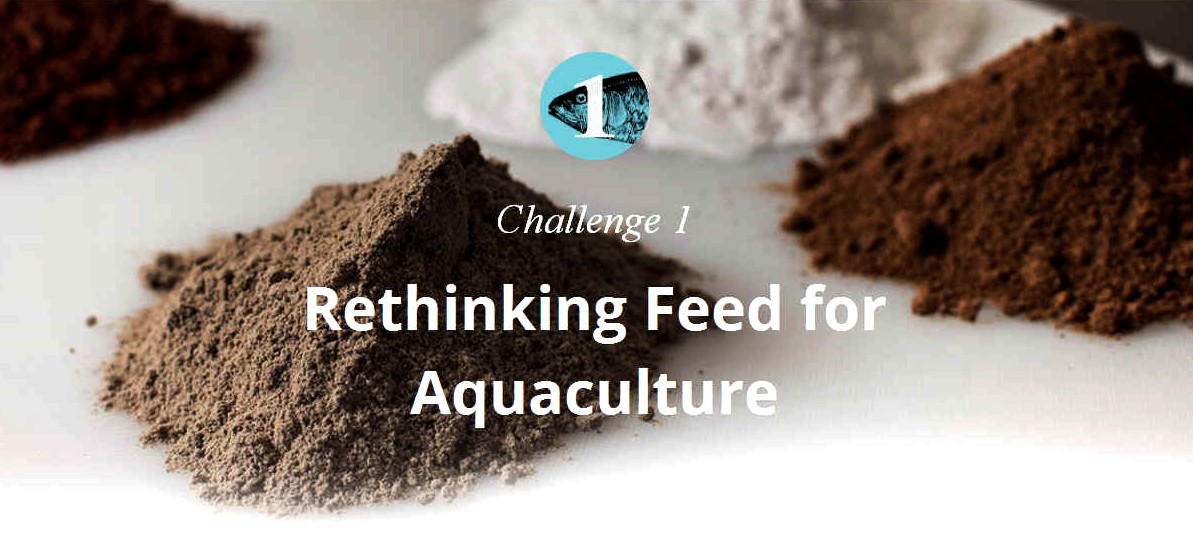
Challenge 1 - Rethinking Feed for Aquaculture
-
Create highly nutritional aquaculture feed replacement that match or improve on the cost and nutritional performance of existing feedstock, while reducing the burden on the natural environment.

Challenge 2 - New Ocean Products -
Create new ocean products that vastly expand the diversity, sustainability, and quality of aquaculture products to meet growing food security needs while decreasing aquaculture's environmental footprint.
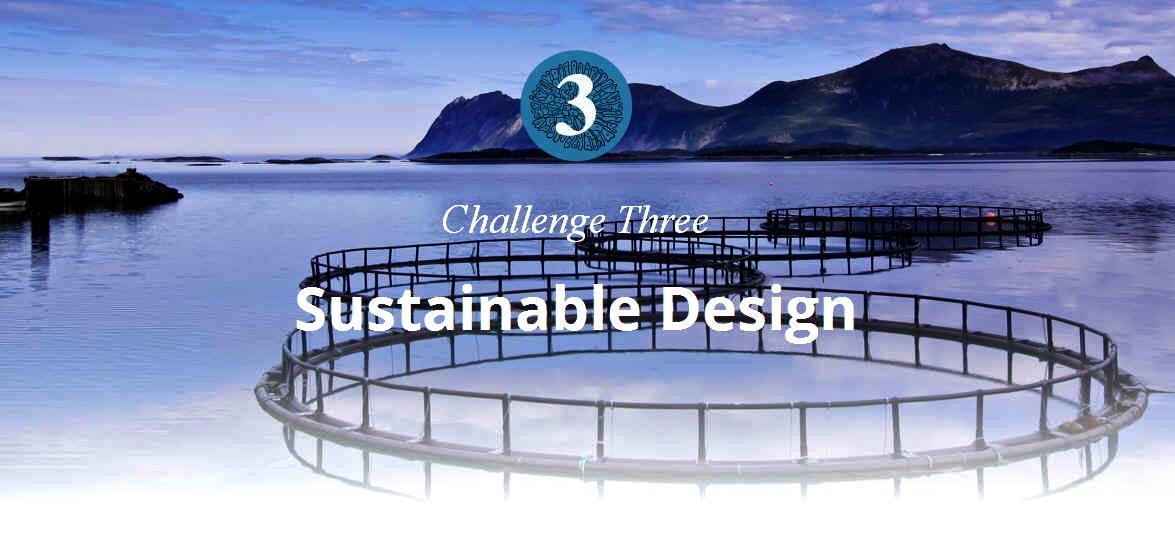
Challenge 3 - Sustainable Design
-
Introduce new designs, methodologies, products and other innovations that are financially and environmentally sustainable, scalable, and will dramatically improve the
efficiency of aquaculture farms thereby improving productivity, livelihoods, and market value.
AQUACELERATOR
Aquacelerator is
the name given by the Australian led effort to revolutionize the aquaculture industry, develop local economies across the Indian Ocean region and improve our relationship with oceans, fishing and aquatic life, by connecting inspiring innovators with the networks capable of turning their ideas into reality. Led by the Australian Department of Foreign Affairs and Trade (DFAT) InnovationXchange, in partnership with SecondMuse, Aquacelerator advances the global adoption and scale of the ten most inspiring ideas surfaced during the
Blue Economy Challenge.
These innovations were selected by industry experts from more than 220 proposals developed in 40+ countries, for their potential to disrupt aquaculture and address one of three challenges:
*
Rethinking - feed
*
Developing - new ocean products
*
Enhancing - sustainable design

RSPCA
ON FISH WELFARE
Water quality
The ‘quality’ of water (temperature, pH, oxygen levels, etc.) has a big impact on fish welfare. Different fish species survive better in different conditions.
The
RSPCA believe more work is needed on aspects of water quality such as carbon dioxide levels, which if too high may impact on fish welfare. Similarly, increasing the water temperature when the fish are small can make them grow more quickly, but if fish grow too fast during this time it can result in spinal deformities.
Handling procedures
Farmed fish are sometimes handled, for example, when they are being vaccinated or when they are being graded according to their size. These procedures can be stressful for the fish, for example if they are taken out of the water, and it is essential to keep handling to an absolute minimum.
Stocking densities
Stocking density is the weight of fish kept in a given volume of water. Research and practical experience has shown that, on its own, stocking density is not necessarily one of the most important things affecting fish welfare. Some fish seem to prefer a higher stocking density, while others prefer lower stocking densities. Stocking densities that are too low can cause certain species of fish to become territorial and aggressive towards each other.
Transport
All transport, whether by
road,
boat or helicopter, can be potentially stressful for the fish, so extra attention is needed during transport, particularly when the fish are loaded and unloaded. It is also essential to be able to maintain the correct water quality for the whole length of the journey, even if delays or emergencies make the journey much longer than expected.
Slaughter
A number of slaughter methods are used in aquaculture. Methods such as the use of
carbon dioxide, suffocation in air or on ice, or bleeding the fish without stunning are all unacceptable on animal welfare grounds. We believe that the only method of slaughter which is acceptable in terms of animal welfare is percussive stunning followed by bleeding.
RSPCA FREEDOM FOOD - Choose higher welfare
If you eat salmon or trout and are concerned about fish welfare then look for products carrying the RSPCA Assured (previously Freedom Food) logo.
RSPCA Assured (previously Freedom Food) is the RSPCA’s food label dedicated to farm animal welfare.
Freedom Food is the RSPCA’s farm assurance and food labeling scheme that aims to ensure that animals are reared, handled, transported and slaughtered according to strict
RSPCA welfare standards developed and monitored by the RSPCA. The
Freedom Food website provides information on
where to buy RSPCA Assured labelled food.
If more consumers insist on higher welfare products, more
supermarkets will want to stock them, which will encourage more farmers to improve their farming practices and ultimately more farm animals will benefit.

SALMON
- Fish that swim in plastic polluted waters are likely to be contaminated
and carry with them that contamination for the people who fish for them.
The farming of salmon runs more risks to the quality of the fish produced
and cannot replace the natural diet of the free roaming wild stocks found
in nature. All of these issues stand to be sidelined in the rush to feed
the world as a result of declining ocean produce.
THE
WORLD BANK ON AQUACULTURE
* A new World Bank report estimates that in 2030, 62% of the seafood we eat will be farm-raised to meet growing demand from regions such as Asia, where roughly 70% of fish will be consumed. China will produce 37% of the world’s fish, while consuming 38% of world’s
food fish.
* By producing more seafood that is affordable and rich in nutrition, aquaculture can help improve food security and livelihoods for the world’s poorest.
* The rise in seafood demand gives countries the opportunity to expand and improve responsible fish and shellfish farming practices.
Nearly two-thirds of the seafood we eat will be farm-raised in 2030. This is according to
"Fish to 2030: Prospects for Fisheries and Aquaculture," which concludes that as sources from wild capture fisheries approach their maximum take, aquaculture
- or fish farming - will help satisfy the growing global appetite for fish and seafood.
The new World Bank report projects that in 2030, aquaculture will produce half of the world’s supply of fish, including
fish for food and other products such as fishmeal.
Meanwhile, 62% of the seafood that will end up on people’s plates will come from fish farms, which will grow production to meet rising demand
- especially from Asia, where roughly 70% of fish will be consumed. In 2030, an emerging middle class in
China will become a particularly large market for fish. With increased investment in aquaculture, China will produce 37% of the world’s fish and consume 38% of the fish the world eats, the report estimates.
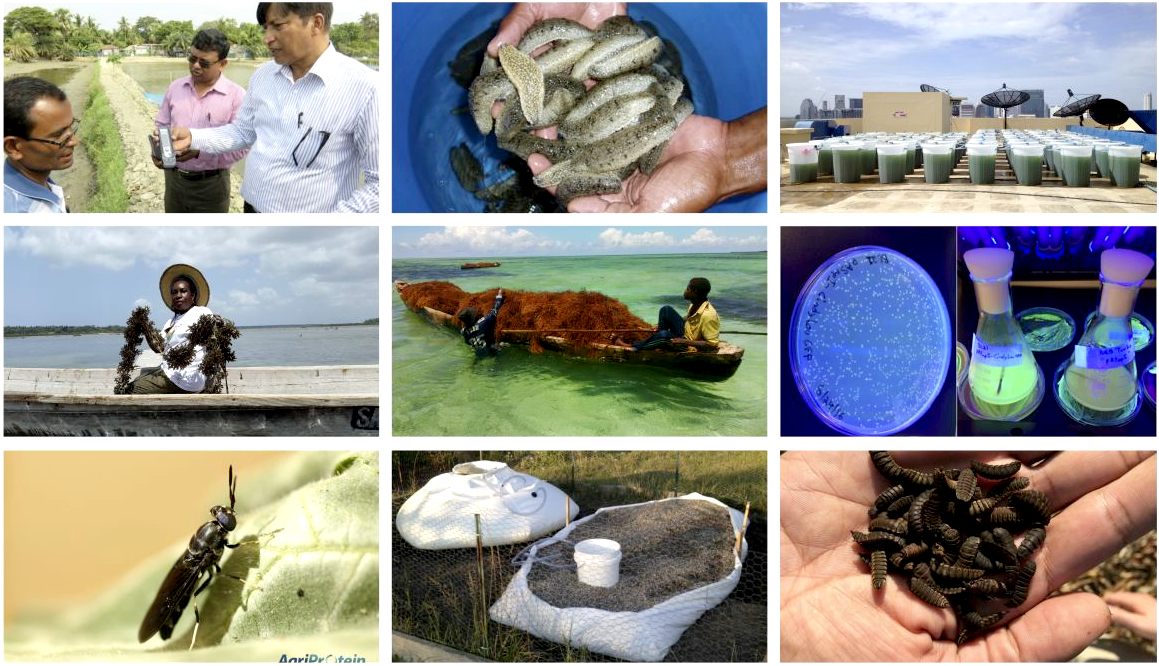
SEAFOOD
- sustains billions of people and is the largest traded food commodity in the world. But have we bitten the hand that feeds us?
Over 31% of global fish populations are estimated to be overfished and while Australia has an enviable record for fisheries management, 15.5% of our dominant stocks were overfished in 2014.
Poorly managed fishing has impacts far beyond the target species. The incidental catch of non-target species – known as bycatch – is deadly to many native species. Fishing vessels and gear can also entrap threatened and endangered species such as dolphins, turtles, seals and seabirds, and damage sensitive marine habitats.
With the global population expected to reach 9.7 billion by 2050, it’s vital that we maintain productive fisheries.
POPULATION GROWTH ESTIMATES
Current UN projections show a continued increase in population in the near future (but a steady decline in the
population growth rate), with the global population expected to reach between 8.3 and 10.9 billion by 2050. UN Population Division estimates for the year 2150 range between 3.2 and 24.8 billion; mathematical modeling supports the lower estimate. Some analysts have questioned the sustainability of further world population growth, highlighting the growing pressures on the environment, global food supplies, and energy resources. Solutions for feeding the nine billion in the future are being studied and documented. One out of every seven people on our
planet go to sleep hungry. People are suffering due to overpopulation, 25,000 people die of malnutrition and hunger related diseases everyday.
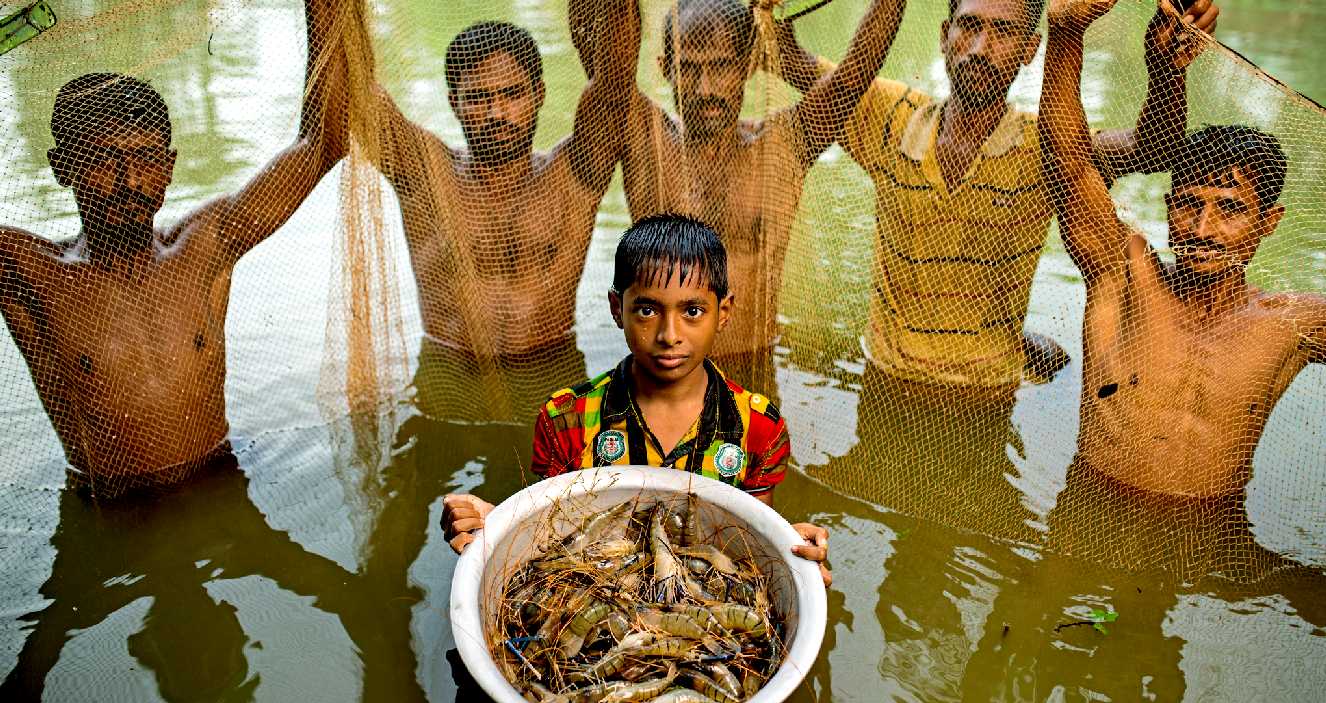
AQUACULTURE
- What is the most climate friendly way of feeding the world? Is is
agriculture or aquaculture. Where do wild fish fit into the equation?
WORLD SECURITY SUMMIT ON
FOOD SECURITY
The World Summit on Food Security held in Rome in 1996, aimed to renew a global commitment to the fight against hunger. The Food and Agriculture Organization of the United Nations
(FAO) called the summit in response to widespread under-nutrition and growing concern about the capacity of agriculture to meet future food needs. The conference produced two key documents, the Rome Declaration on World Food Security and the World Food Summit Plan of Action.
The Rome Declaration calls for the members of the United Nations to work to halve the number of chronically undernourished people on the Earth by the year 2015. The Plan of Action sets a number of targets for government and non-governmental organizations for achieving food security, at the individual, household, national, regional and global levels.
Another World Summit on Food Security took place in
Rome between November 16 and 18, 2009. The decision to convene the summit was taken by the Council of FAO in June 2009, at the proposal of FAO Director-General Dr Jacques
Diouf. Heads of State and Government attended the summit, which took place at the FAO's headquarters.
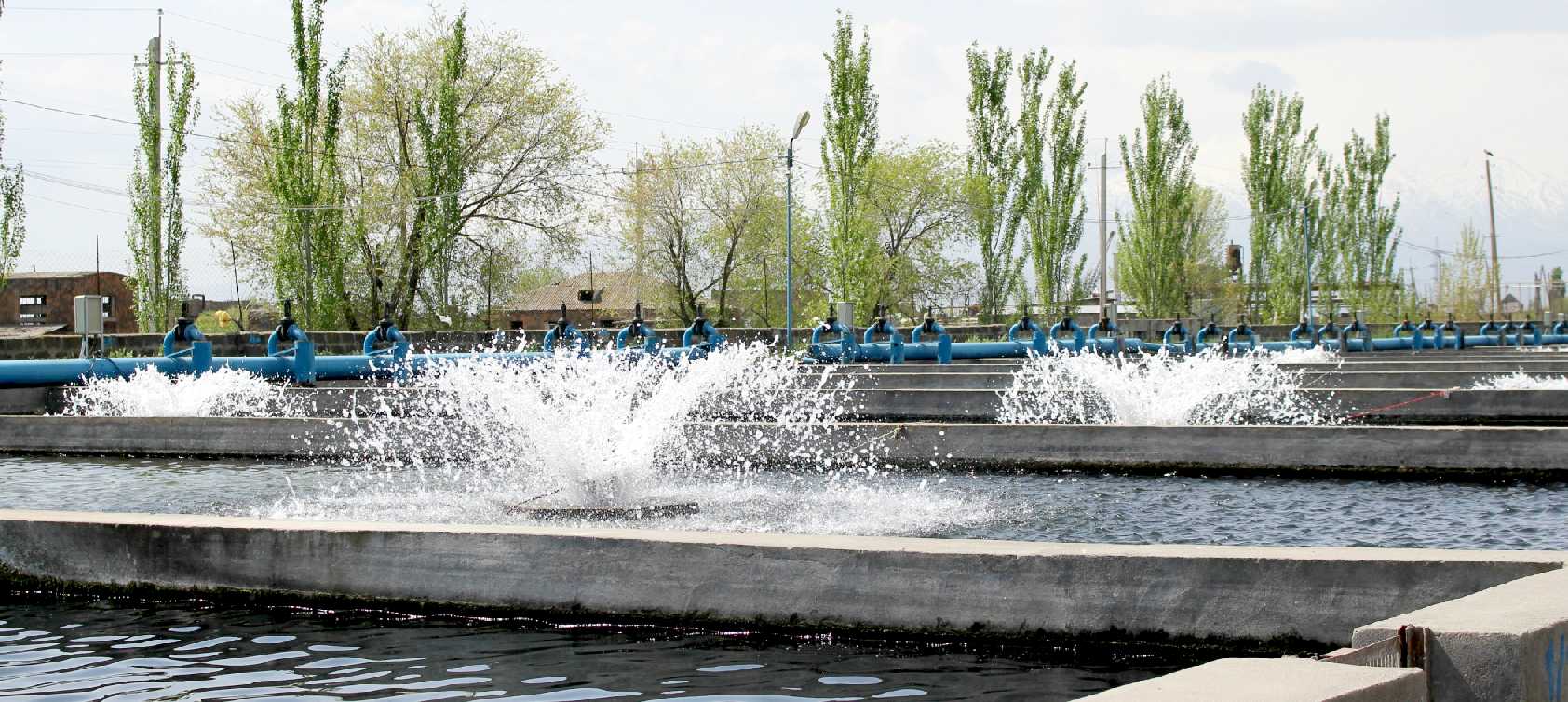
ACIDIFICATION
- ADRIATIC
- ARCTIC
- ATLANTIC - BALTIC
- BAY BENGAL - BERING
- CARIBBEAN - CORAL - EAST
CHINA
ENGLISH CH
-
GOC - GUANABARA
- GULF
GUINEA - GULF
MEXICO
- INDIAN
-
IRC - MEDITERRANEAN -
NORTH SEA - PACIFIC
- PERSIAN GULF - SEA
JAPAN
STH
CHINA - PLASTIC
- PLANKTON - PLASTIC
OCEANS - SEA
LEVEL RISE - UNCLOS
- UNEP
WOC
- WWF
AMAZON
- BURIGANGA - CITARUM - CONGO - CUYAHOGA
-
GANGES - IRTYSH
- JORDAN - LENA -
MANTANZA-RIACHUELO
MARILAO
- MEKONG - MISSISSIPPI - NIGER - NILE - PARANA - PASIG - SARNO - THAMES
- YANGTZE - YAMUNA - YELLOW
LINKS
& REFERENCE
http://www.seafoodwatch.org/ https://www.rspca.org.uk/adviceandwelfare/farm/fish/keyissues http://modernfarmer.com/2015/03/dear-modern-farmer-is-fish-farming-sustainable/
https://en.wikipedia.org/wiki/Fish_farming
http://ec.europa.eu/maritimeaffairs/policy/blue_growth_en https://en.wikipedia.org/wiki/World_Food_Programme https://en.wikipedia.org/wiki/Food_security http://www.worldbank.org/en/topic/foodsecurity/ http://www.foodsecurity.ac.uk/
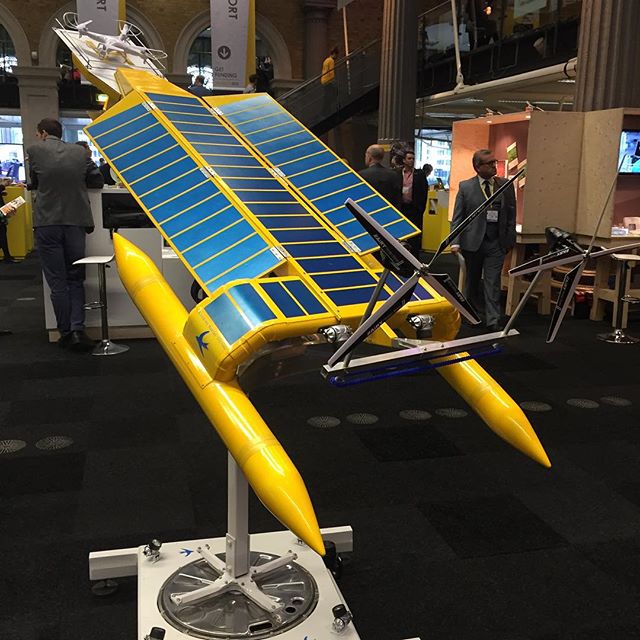
SEAVOLUTION -
Development of this award winning proof of concept vessel could give mankind
the ability to clean up the mess he is making of the oceans, so bringing back
wild fish stocks in healthier seas.
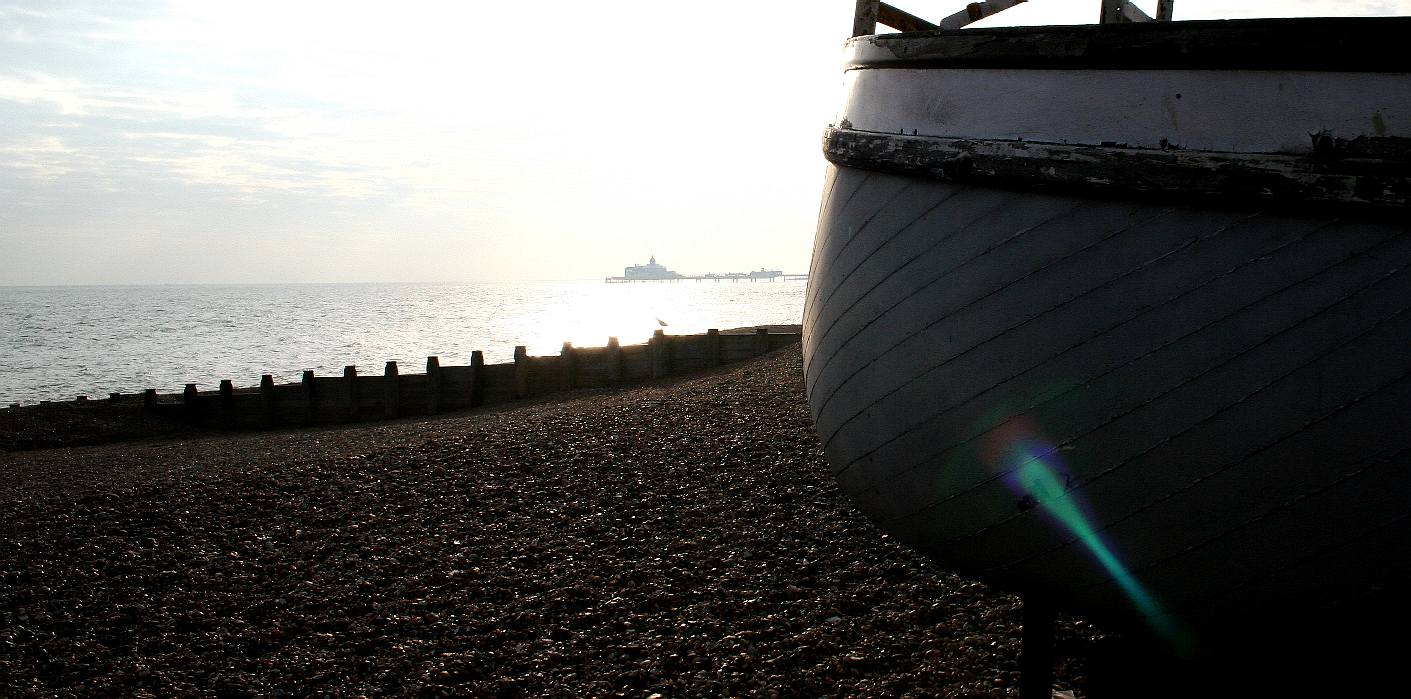
|












